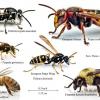Armour Class determines how easy it is to be hit? Why?
Seems to me that this is a really stupid thing. How can your AC define how hard it is for a character to hit you? I mean... you stand there in a cotton shirt, the guy swings, you get hit. If you stand there in a Full Battle Plate Mail of the Sun and he swings, does he just miss you completely? That doesn''t make a whole bunch of sense to me. Surely it would be much better to say that the armour you have on determines how much damage you take, while your agility (or some other stat) determines your ability to actually be hit in the first place.
Pretty simple math really. DamageDealt = WeaponDamage - Armour
Don''t mean to rant, but I''ve just been sitting here, remembering my old days playing D&D and this just suddenly jumped out at me as really strange thing.
I mean, come on. You''re facing a 30-ton flying dragon with an AC in the 100''s, you swing your axe... AND YOU MISS because it''s got a high armour class! How could you possibly miss something that size just because it''s got a scale hide? I''m quite happy with the possibility of doing zero damage, but actually missing the target!
And another thing... is anyone actually sure that those little red potions aren''t carcinogenic?
Always prey on the weak, the timid and the stupid. Otherwise you'll just get your butt kicked
For a tortoise, this is extremely hard to do, but when you get it right... the expression on their faces ...
For a tortoise, this is extremely hard to do, but when you get it right... the expression on their faces ...
In real life, armor does two things - it either deflects a blow or lessens its impact. Many RPGs only take the first into acount, so they say armor makes it hard to hit (and indeed it does make it harder to hit with a solid blow - plates easily deflect sword blows so they do no damage). Very few take the second aspect into consideration. Leather armor doesn't deflect blows very well, but because it is stiff it still slows them down and distributes the force(simmilar to how kevlar stops a bullet). Chain mail might even give a bonus to hit but subtract a lot from damage because weaposn can easily catch on the links when hitting (so they don't get deflected if its a spiked mace, or a sword/spear/etc used to impale), but it distributes the force well also.
EDIT: I know nothing at all about armor but the above is how it was explained somewhere I read once and it made sense. I may be entirely wrong.
[edited by - Extrarius on May 31, 2003 6:22:24 PM]
EDIT: I know nothing at all about armor but the above is how it was explained somewhere I read once and it made sense. I may be entirely wrong.
[edited by - Extrarius on May 31, 2003 6:22:24 PM]
"Walk not the trodden path, for it has borne it's burden." -John, Flying Monk
Unlike most people here, I suspect, who are or have been involved in pen-and-paper RPG''s, I do not come from a Dungeons & Dragons background. In fact, the first time I was confronted with the system, it struck me as utterly ridiculous - the armour class was pretty high on my list of complaints, coupled with a certain inconsistency I perceived with the whole THAC0 thing, though that one may have been ignorance on my part. The idea of wizards going uncharacteristically senile upon casting a spell played a part, too.
But the armour class is simply another level of abstraction - an added simplification. I have role played (or rather, presided as game master, DM, or what you would call it) mostly using a far more complex system (the Swedish Drakar & Demoner, which, despite the similarity in abbreviations, is not directly related to DnD), and the truth is that with a more realistic system (involving, with certain extended rules, different types of damage, chances to hit, parry and evade, armours with different absorption for different types of damage, many different hit areas, et cetera), you will likely spend a lot of time bogged down in complex rules of combat.
The beauty of CRPG''s is, of course, that all that tedious business of rolling n dozen dice for every exhange of blows is deferred to the processor (which is rather better at it than any human), so the oversimplifications of Dungeons & Dragons are no longer necessary.
But the armour class is simply another level of abstraction - an added simplification. I have role played (or rather, presided as game master, DM, or what you would call it) mostly using a far more complex system (the Swedish Drakar & Demoner, which, despite the similarity in abbreviations, is not directly related to DnD), and the truth is that with a more realistic system (involving, with certain extended rules, different types of damage, chances to hit, parry and evade, armours with different absorption for different types of damage, many different hit areas, et cetera), you will likely spend a lot of time bogged down in complex rules of combat.
The beauty of CRPG''s is, of course, that all that tedious business of rolling n dozen dice for every exhange of blows is deferred to the processor (which is rather better at it than any human), so the oversimplifications of Dungeons & Dragons are no longer necessary.
I defer to Fallout for this one:
Fallout has both AC and Damage Reduction (DR). AC determines how often you get hit; DR (a percentage) is how much the attack''s damage is blunted.
Fallout has both AC and Damage Reduction (DR). AC determines how often you get hit; DR (a percentage) is how much the attack''s damage is blunted.
http://edropple.com
There are at a minimum two things you have to consider about combat. One is, "did I hit?", and the second is, "how much damage did I do" (I like to include other things like, "how well did I hit?" and "where did I hit?").
As Extrarius mentioned, armor does two things, it can absorb damage or it can deflect damage. If it deflects the damage, then the person shouldn''t take any harmful damage ar all. For example, a hit which barely made the to-hit roll, might glance off of armor, meaning that the blow wasn''t placed solidly. Armor can also absorb damage changing the damage type. For example, even if a swing from a broadsword doesn''t penetrate full plate armor, it may very likely dent the armor, causing some amount of crushing damage.
Good games factor all these things in. Things like the type of damage (crushing, cutting, impaling), the method of attack (swinging, thrusting), how well the character hits, the penetration capability of a weapon (based on type of damage and method of attack...a thrusted sword has better penetration capacity than a swung sword, and a pick axe has an even better penetration) and the deflection and armor absorbtion abilities of the armor itself.
If you''re into PPRPG''s, I might suggest digging up a copy of WarpWorld (made by the Blackburg Tactical Research company) or HarnMaster. Good luck finding WarpWorld, but you should probably still be able to find HarnMaster. Another oldie but goodie is Runequest.
As Extrarius mentioned, armor does two things, it can absorb damage or it can deflect damage. If it deflects the damage, then the person shouldn''t take any harmful damage ar all. For example, a hit which barely made the to-hit roll, might glance off of armor, meaning that the blow wasn''t placed solidly. Armor can also absorb damage changing the damage type. For example, even if a swing from a broadsword doesn''t penetrate full plate armor, it may very likely dent the armor, causing some amount of crushing damage.
Good games factor all these things in. Things like the type of damage (crushing, cutting, impaling), the method of attack (swinging, thrusting), how well the character hits, the penetration capability of a weapon (based on type of damage and method of attack...a thrusted sword has better penetration capacity than a swung sword, and a pick axe has an even better penetration) and the deflection and armor absorbtion abilities of the armor itself.
If you''re into PPRPG''s, I might suggest digging up a copy of WarpWorld (made by the Blackburg Tactical Research company) or HarnMaster. Good luck finding WarpWorld, but you should probably still be able to find HarnMaster. Another oldie but goodie is Runequest.
The world has achieved brilliance without wisdom, power without conscience. Ours is a world of nuclear giants and ethical infants. We know more about war than we know about peace, more about killing than we know about living. We have grasped the mystery of the atom and rejected the Sermon on the Mount." - General Omar Bradley
OK, kind of makes sense.
Always prey on the weak, the timid and the stupid. Otherwise you'll just get your butt kicked
For a tortoise, this is extremely hard to do, but when you get it right... the expression on their faces ...
For a tortoise, this is extremely hard to do, but when you get it right... the expression on their faces ...
quote:
Original post by SoaringTortoise
I mean, come on. You''re facing a 30-ton flying dragon with an AC in the 100''s, you swing your axe... AND YOU MISS because it''s got a high armour class! How could you possibly miss something that size just because it''s got a scale hide? I''m quite happy with the possibility of doing zero damage, but actually missing the target!
Not to nit-pick, but a high AC makes something easy to hit. Low AC is good, high AC is bad.
-- Steve --
-- Steve --
Coming from a strong D&D background here...
When I used to dm games I would never tell my players that they missed the monster unless they rolled a 0. Any other time I would simply tell them that the blade either A) was deflected, B) hit but the armor was strong (hence the high AC), or C) Missed completely (Since some AC involves manual dodging).
When I used to dm games I would never tell my players that they missed the monster unless they rolled a 0. Any other time I would simply tell them that the blade either A) was deflected, B) hit but the armor was strong (hence the high AC), or C) Missed completely (Since some AC involves manual dodging).
----------[Development Journal]
quote:
Original post by Miserable
The beauty of CRPG''s is, of course, that all that tedious business of rolling n dozen dice for every exhange of blows is deferred to the processor (which is rather better at it than any human), so the oversimplifications of Dungeons & Dragons are no longer necessary.
I''ve been making this point in the other threads since I started here... Complex systems in the narrative world (pen-and-paper or whatever-- non-computer games) generally fail because people don''t want to be bogged down by so many calculations and don''t want to have to memorize so many rules and tables. That''s why (TSR''s) D&D was/is so popular-- it reduces combat to a single dice roll.
Incidentally, Dwarf with Axe, you should also realize that one dice-roll is not equal to one swing, rather it tells the result of one "round" of combat, which could consist of a few swings or thrusts, blocks, and dodges. It even says that right in the player''s handbook rules. What it doesn''t elaborate enough on is it''s up to the GM to explain in detail what happens... unfortunately, most D&D GMs that I''ve had the displeasure of playing with just say "you hit" or "you miss" and move on... so... it''s like Las Vegas with swords.
When computer RPGs were first made, the authors used the D&D rule set because it is a well known system that works. It may not be the best in terms of being realistic, but it''s balanced, generally fair, and people know and like it. However, the real question that we''ve been trying to answer in other threads is why hasn''t computer RPGs evolved past that much? Sure some games have little improvements such as dynamic stamina, lots of skill-checking for weapons, blocking, etc... but combat is still for the most part very stiff, boring, uninspiring, and formulaic.
-Desco-
This topic is closed to new replies.
Advertisement
Popular Topics
Advertisement
Recommended Tutorials
Advertisement








